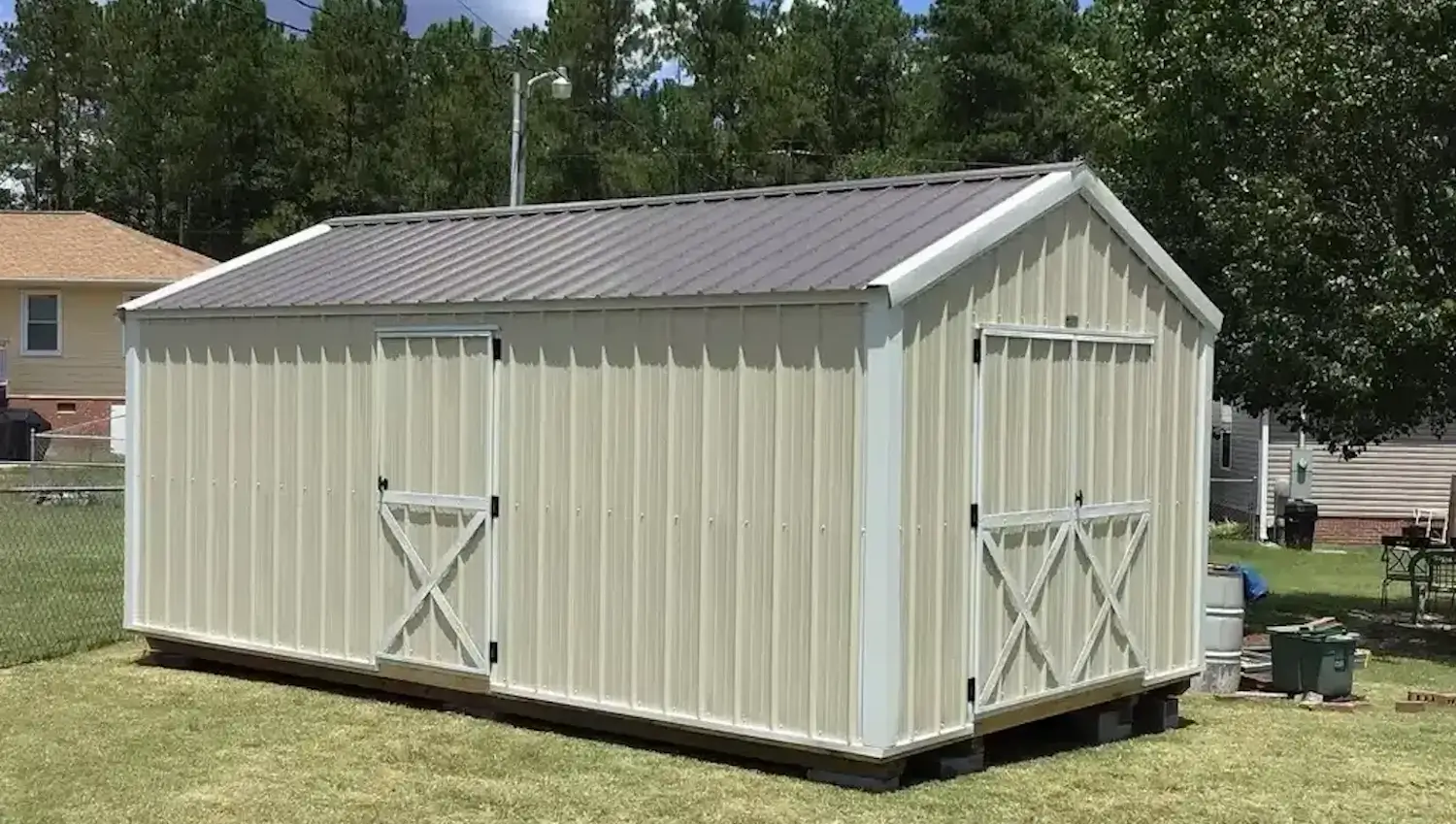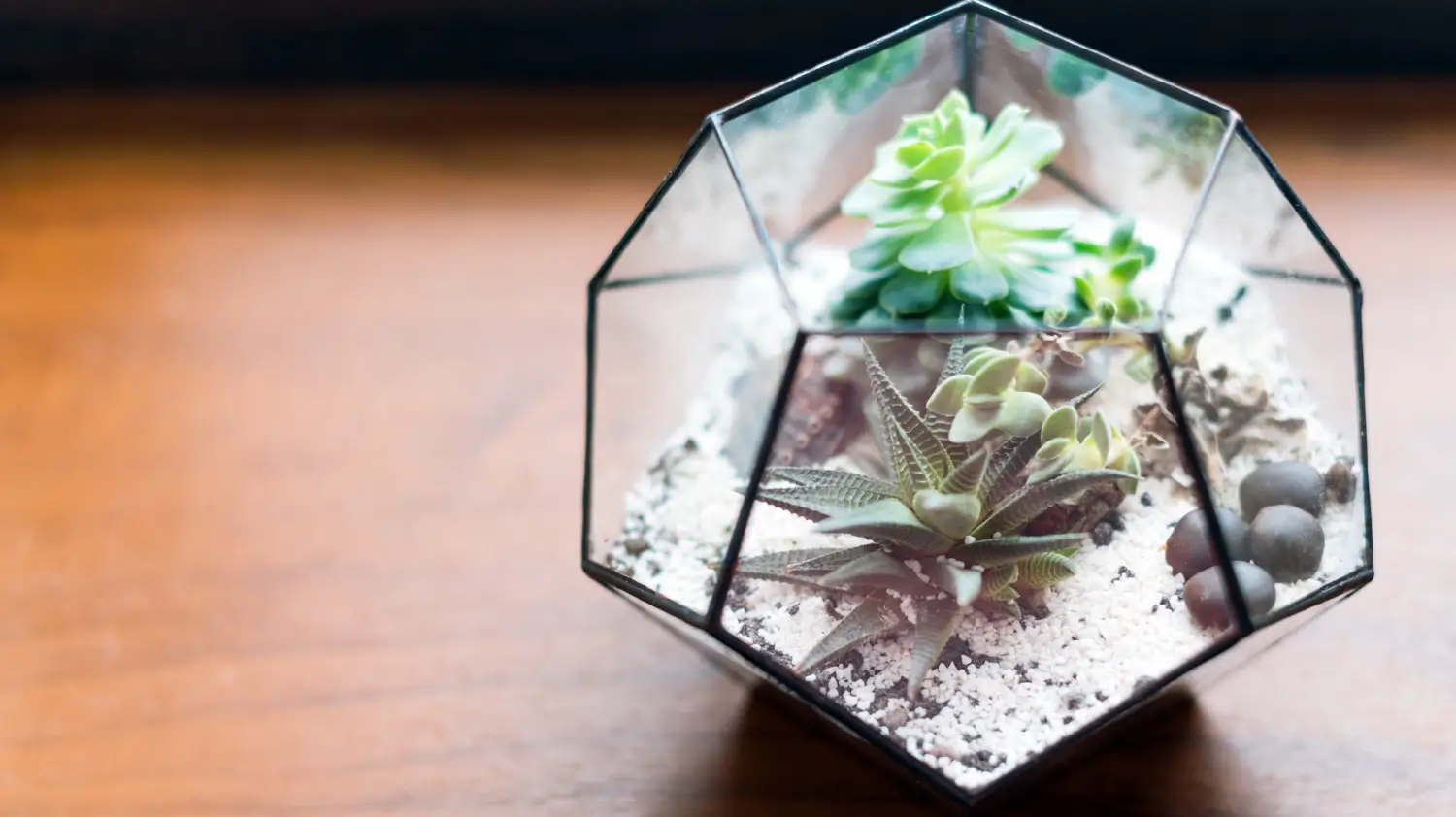
August 24, 2025

Indoor gardening is becoming popular due to its many benefits. Growers can have the required plants flourish year-round within these controlled systems, improving the appeal and environment of indoor spaces. Common methods include using greenhouses and grow tents.
Another example is growing plants inside a terrarium. These transparent containers are ideal for slow-growing, easy-to-maintain plants. Growcycle offers helpful guides for growing and maintaining plants inside indoor gardens.
Terrariums are transparent glass or plastic containers that grow different plants by maintaining the required growing conditions. They are an innovative idea for creating an indoor garden in a limited space with fewer care and maintenance measures. Terrariums are small, self-sustained ecosystems where water and oxygen replenish and maintain the system’s humidity.
A terrarium may be small and comprise 1 to 3 plants or larger, with 4 to 6 plants. These green spaces inside homes greatly improve the area's aesthetic appeal and grow plants while minimizing resource use.
Terrariums may be open or closed systems. Both of these types are suitable to grow different types of plants.
An open terrarium is a glass container without a covering that shields the inner ecosystem from outside environments. Plants that require minimal humidity and good air spaces, such as cacti, are suitable for growing in open terrariums. They require frequent watering, as the excess water continuously leaves the system.
In closed terrariums, the glass containers are sealed with a suitable lid or cork. The glass retains humidity in its closed environment, so growers do not have to water such systems frequently.
Plants with high humidity requirements, such as ferns, mosses, creeping figs, and golden pothos, are ideal for growing in a closed-system terrarium. However, growers should not seal the closed system completely; instead, they should keep it close enough to allow excess humidity and temperature to leave the container.
Terrariums are small, enclosed ecosystems ideal for decorative purposes, while conventionally grown plants thrive in open-air conditions and serve a variety of functional and aesthetic roles. Here are some key differences:
| Aspects | Terrarium grown plants | Conventionally grown plants |
|---|---|---|
| Space | Controlled and limited space to grow plants | Plants are grown in open spaces |
| Growth Rate | Slower due to less area | Higher due to ample space |
| Maintenance | Easy to maintain as a closed system sustains the required conditions | Frequent maintenance is required |
| Eco-friendly | More eco-friendly with a lower gardening footprint | Less eco-friendly due to more resource use and high gardening footprint |
| Temperature | Consistent temperature for a long | Sudden natural variations in temperature |
| Airflow | Airflow may be limited in a closed system | Sufficient air circulation |
Terrarium plants should be slow-growing and require fewer maintenance measures. Here are some suitable options to plant inside a terrarium:
Prayer plant has lush green foliage with burgundy or red shading at the leaf bottom. Its variegated leaves make it suitable for growing as a decorative houseplant. The name ‘prayer plant’ is derived from its habit of closing its leaves at night like the hands of a prayer.
Scientific Classification
Kingdom: Plantae
Family: Marantaceae
Order: Zingiberales
Genus: Maranta
Botanical Name: Maranta leuconeura
Common Name: Prayer plant
Plant Type: Herbaceous perennial
Characteristics
Polka dot plants are suitable for growing indoors, in terrariums, or in outdoor decorative green spaces due to their lush and vibrant appearance. The plant requires well-draining soil with a slightly acidic pH of 6.0 to 6.5. With optimal growing conditions and little maintenance, polka dot plants can last for several years.
Scientific Classification
Kingdom: Plantae
Family: Acanthaceae
Order: Lamiales
Genus: Hypoestes
Common Name: Polka dot plant
Botanical Name: Hypoestes phyllostachya
Plant Type: Herbaceous perennial
Characteristics
Cryptanthus are slow-growing plants that are perfect for adding vibrancy and improving the aesthetic appeal of indoor environments. They grow small roots and require fewer maintenance measures, making them a preferable choice for terrariums.
Scientific Classification
Kingdom: Plantae
Family: Bromeliaceae
Order: Poales
Genus: Cryptanthus; Otto & A.Dietr
Common Name: Earthstar
Botanical Name: Cryptanthus
Plant Type: Herbaceous perennial
Characteristics
Chinese Banyans are slow-growing trees that can conveniently be grown with many other plants. Their compact size and low maintenance make them ideal for terrariums.
Scientific Classification:
Kingdom: Plantae
Family: Moraceae
Order: Rosales
Genus: Ficus
Common Name: Chinese banyan
Botanical Name: Ficus microcarpa
Plant Type: Tree
Characteristics
Creeping fig is an evergreen climbing vine that shows active growth during warmer months. Its lush, aesthetic, small-sized leaves are a pleasant addition to any compact area, indoor green space, or even terrarium. It can create a foliage cascade when grown at heights in a terrarium.
Scientific Classification
Kingdom: Plantae
Family: Moraceae
Order: Rosales
Genus: Ficus
Common Name: Creeping fig
Botanical Name: Ficus pumila
Plant Type: Creeping vine
Classification
Epipremnum aureum, commonly known as golden pothos, are evergreen plants that require minimal care and beautify green spaces with their lush green appearance. Due to their small size and decorative features, they are well-known as house plants and terrariums. Beginners with minimal planting experience can grow and maintain golden pothos well.
Scientific Classification
Kingdom: Plantae
Family: Araceae
Order: Alismatales
Genus: Epipremnum
Common Name: Golden Pothos
Botanical Name: Epipremnum aureum
Plant Type: Evergreen houseplant
Characteristics
Nerve plants grow well in warm environments, and their vibrant vegetation makes them a good indoor option. These easy-to-propagate plants have premium use in decorative green spaces due to their colorful vegetation.
Scientific Classification
Kingdom: Plantae
Family: Acanthaceae
Order: Lamiales
Genus: Fittonia
Common Name: Nerve plant
Botanical Name: Fittonia albivenis
Plant Type: Herbaceous perennial
Characteristics
Here is a step-by-step guide to creating a Terrarium:
Gardeners need a few basic tools and materials for a terrarium to thrive. Clean scissors are used to trim plants, large spoons are used to add soil, and spray bottles are used to mist the plants.
Essential materials include a clear container, appropriate plants, and decorative items. Refined gravel, activated charcoal, sheet moss, and high-quality potting soil are also needed for proper drainage and layering.
A clean, clear container is crucial for healthy plant growth. It should be free of dirt, cracks, or harmful residues. Choose a size that allows enough space for the plants.
Containers can be opened or closed depending on the plants. Open terrariums work well for drought-tolerant plants like succulents and cacti, while closed ones suit humidity-loving plants.
Select plants that grow slowly and require little maintenance. Terrarium plants should thrive in high humidity and adapt to different light levels. Common choices include ferns, mosses, and small tropical plants.
Start with a layer of gravel or small stones at the bottom for drainage since terrarium containers don’t have drainage holes. Add a ½-inch layer of activated charcoal above the gravel to remove odors and keep the environment fresh.
Place a layer of sheet moss over the charcoal to prevent soil from mixing with the lower layers. Add a high-quality potting mix on top, making the soil layer thick enough to support plant roots. The soil should be clean and airy for proper growth.
Trim any damaged parts or long roots before planting to fit the limited space of the terrarium. Use a spoon to make small holes in the soil, then gently place the plants. Leave enough space between them to avoid overcrowding.
Once the plants are in place, mist them gently with a spray bottle. Avoid overwatering to prevent diseases caused by standing water. Maintain just enough moisture to keep the environment humid.
Regular care ensures the terrarium stays healthy. Wipe any dust or dirt from the container walls, remove fallen leaves or dead plants, and check for signs of overcrowding or disease. This helps create the best conditions for plant growth.
Due to the high humidity inside a terrarium container, several problems may arise. Here are some common issues that can happen to terrarium plants and possible ways to overcome them:
Can you use tap water for terrariums?
Hydrating a terrarium with tap water is fine. Growers may leave it for at least a day to settle excess chlorine. Rainwater is also good for watering a terrarium garden.
What is the ideal location to keep a terrarium?
Keep terrariums in an area with bright, indirect sunlight. Create a suitable space specifically for the terrarium container, as disturbing it may harm the plants growing inside.
What is the suitable ratio for the terrarium's drainage material?
Add one part refined drainage material and three parts premium potting soil so that one-third of the terrarium's space should contain drainage material.
Terrarium plants can improve the aesthetic appeal of any indoor area. They absorb different pollutants from indoor air, acting as air purifiers and improving the surrounding air quality. Choosing the right plants with low maintenance requirements is key to a healthier and lasting terrarium. Growcycle offers different ways to grow lush green spaces indoors. Its valuable advice can also benefit new gardeners.
Disclaimer: This material is for informational purposes only and should not be relied on for legal, medical, financial, or any other form of professional advice.